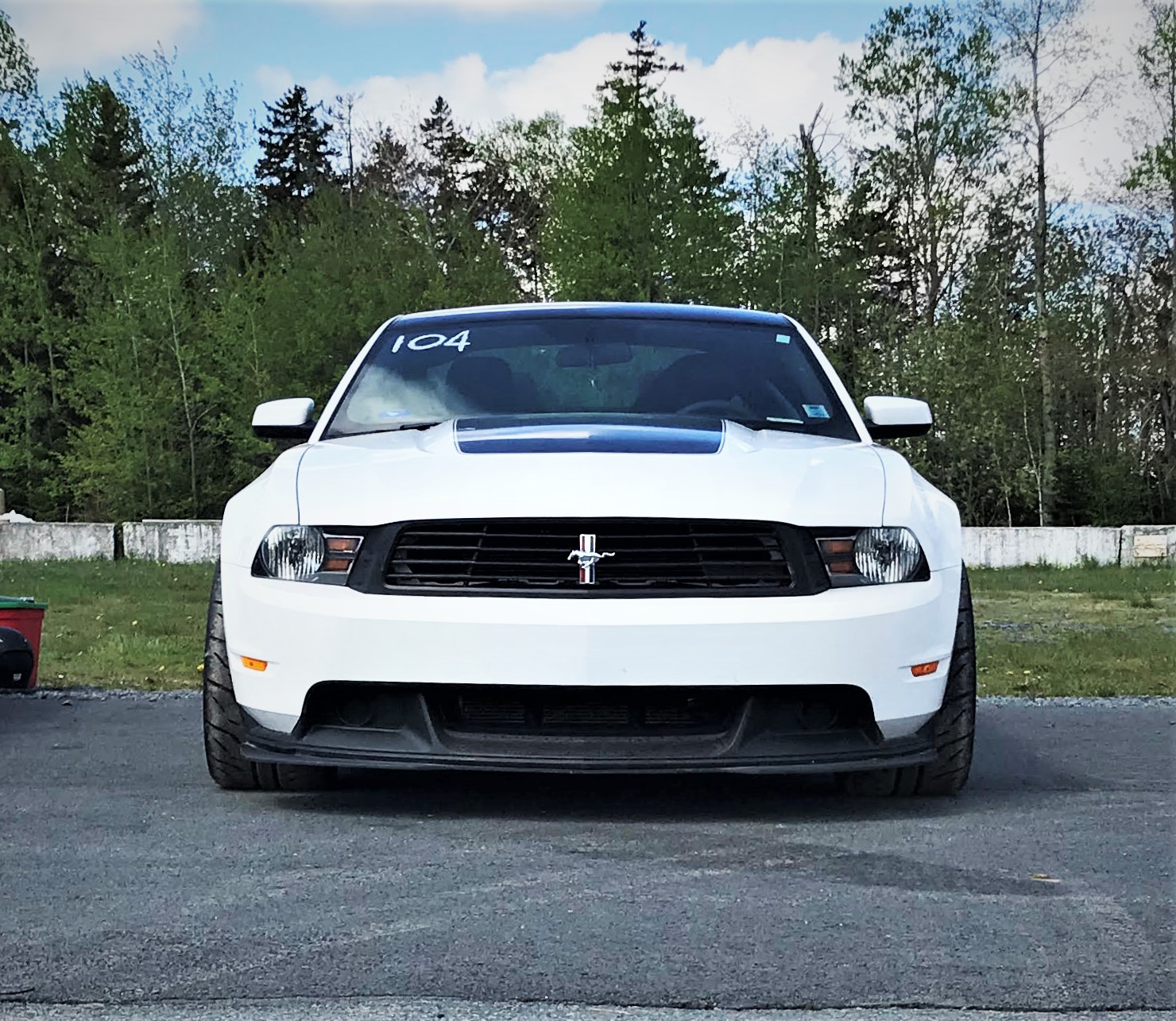As if revealing the Ford GT wasn't exciting enough for car enthusiasts, Ford gave the world another treat in the form of the Mustang Shelby GT350R. It seems like more people have been talking about the Ford GT and the new F-150 Raptor and this may have been a little overshadowed. In my opinion, it's not due to it being less significant than either (okay, maybe it isn't quite as significant as a new GT), but because the biggest surprise came when the GT350 was revealed a few weeks ago and a lot of people were expecting a more hard core version to come at some point.
Still, the fact that this is announced now is great. The new Mustang has been on sale for just a few months and typically it takes one model year or two to reveal a higher performance version of a model. Look at the history of Mustangs, Camaros, Corvettes and even exotics from across the pond. The run-of-the-mill Mustang has been on sale for relatively little and then Ford announced the King Cobra Roush supercharger packages (Mustang GT Ford Racing Roush Supercharger kit), then they announced the Shelby GT350 and now there's a GT350R. Plus there are talks about the return of a GT500 with gobs of horsepower. Ford is doing something right!
The most obvious changes outside are a more aggressive front splitter to increase down force and a larger carbon fibre rear spoiler that Ford says is a "high-efficiency" wing so I am assuming it has little effect on drag. Ford says the wing not only increases downforce but moves the vehicle's centre of pressure rearward so the downforce should be biased towards the rear compared to the the standard GT350. While the spoiler and wing together should increase grip and stability at high speed, this bias should improve stability in high speed corners compared to the GT350. Other changes that are unique to the GT350 found their way here including the sculpted, lowered hood with the vent for heat extraction and lift reduction, underbody belly pans front and rear, an aggressive diffuser, vented wheel wells and turbulence-reducing fender vents, wheel air curtains and side skirts. The exhaust tips appear to have been blackened out compared to the polished ones found on the standard GT350.
To save weight, Ford removed the air conditioning, stereo, rear seats, trunk floorboard and carpet, backup camera and emergency tire sealer and inflator. Exhaust resonators also have been removed for weight savings which should, not only reduce weight, but let the 5.2 litre V8 sing more freely. If you don't want a stripped down car, Ford is offering an optional Electronics Package which will bring dual-zone air conditioning, 8-inch touch screen with navigation, seven-speaker audio system, turn signal mirrors and more. I suspect that the Electronics Package will probably cut the 130 lbs weight savings by about half but that should only marginally slow down the car so I think it's worth it. I typically don't like added electronics and, therefore, weight and complexity but for the sake of air conditioning and audio I think I would go for it.
Ford is also using lightweight carbon fibre wheels, which Ford will proudly say it is the first major automaker to introduce this innovative wheel technology as standard equipment. The wheels save 13 lbs per each single wheel, for a total of 52 lbs, yet they are stiffer than equivalent aluminum wheels. The wheels measure 19 x 11 inches up front and 19 x 11.5 inches in the back so they are substantial in size and measure 0.5 inches wider in the front and the back compared to the standard GT350. The wheels will be wrapped in Michelin Pilot Sport Cup 2 tires with a rubber compound and a construction that is unique to Shelby GT350R. Rounding off the suspension are revised spring rates, bushings, jounce bumpers, cross-axis ball joints and anti-roll bars, unique alignment settings and a lowered ride height. The shocks have also been recalibrated but, unlike the Z/28, Ford stuck to the MagneRide dampers instead of going to fixed dampers. This should mean it will ride better compared to the Z/28 but it's hard to say what, if any, detriment this will have on damping performance on the track.
Ford said this will go on sale later this year in Canada and the U.S. so we shouldn't have to wait too long to see how this thing performs. Where did I put that winning lottery ticket?

















Comments
Post a Comment